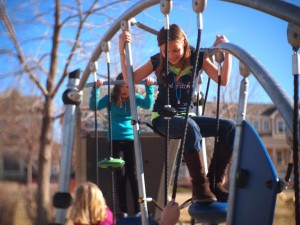We all know the value of collaboration in helping students to learn and develop, but how important is peer-to-peer feedback? Teacher of 16 years and co-director of AusMinds, Tammie Meehan, aims to educate communities about the value of developing a growth mindset in our children, through the art of peer feedback. “It’s about revisiting the notion that “it takes a village to raise a child”, she says. “Our school understands the importance of giving our students a voice, allowing them to do the talking, not listening to the teacher talking constantly. Peer-to-peer feedback gives students the opportunity to learn collaboration skills and asks them to make important decisions about their work and their learning.”
50% of Feedback Received From Peers
John Hattie, author of Visible Learning for Teachers says “Teachers who do not acknowledge the importance of peer feedback can be most handicapped in their effects on students. Interventions that aim at fostering correct peer feedback are needed”. As Tammie explains, “Students receive more feedback from their peers than anyone else each day. If they are explicitly taught how to give and receive process-related feedback correctly, this can have a high impact on their learning.” In a study that Tammie conducted together with Trevor Ragan, from Train Ugly, it was revealed that 50% of the feedback respondents received came directly from their peers, further highlighting its necessity within the context of learning.
“Employers are now expecting their employees to be able to work collaboratively, to give and receive process-related feedback and work as teams”, says Tammie. “Helping children to develop these skills is critical.” Combining the 5 C’s, peer-to-peer feedback offers an effective pathway for schools and classrooms to provide opportunities for their students to develop these essential skills, better preparing them for 21st century careers and life.
Building a Student-Centered Culture
“We spend a lot of time building a classroom culture that is a safe place for students, where they can take risks and feel comfortable sharing their opinions”, says Tammie. “All students learn to give feedback that is not personal or related to outcomes, but is process-focused. They learn to ‘be kind, be specific and be helpful’. Our students readily voice their opinions. They know they are valued and respected. They are at the center of learning.” She goes on to explain how by embracing a student-centered culture in their school, they have witnessed a significant increase in student engagement and performance. “We have seen work completed that is of an excellent standard. It has been a testament to what young children can achieve if they are encouraged. They understand that by listening to feedback, they are given the tools to improve their work and their growth mindset motivates them to try their hardest.”
When asked how others can begin to embrace a similar school culture, she highlights the importance of creating a learning space where mistakes are celebrated, where peer feedback is always welcome, and where open collaboration is regularly facilitated and encouraged.
21st Century Learning
Moving towards more inclusive education, Tammie is one among many innovative educators placing an emphasis on student-centered learning, and the importance of a growth mindset. Growing up in a digital world dominated by social media, peer feedback and collaboration are essential parts of student development where understanding its value is key.
Technology focused on personalizing the learning experience is helping educators to make student-centered education a reality, facilitating outcomes-focused collaboration throughout the learning process. Providing schools and educational leaders with the tools they need to advance, EdTech solutions like Fishtree, through the power of learning relationship management, are helping educators to create, as Tammie puts it, “a growth mindset culture that involves the staff, the students, the families, and the local community.”
Like what you’ve read? Make student-centered education a reality with the 21st century learning platform, bringing one-to-one instruction to every classroom.
About the author:
Lorna Keane specializes in language teaching and has taught in second and third-level institutions in several countries. She holds a B.A in languages and cultural studies and an M.A in French literature, theory and visual culture. Follow her on Twitter or connect on LinkedIn.
Image credits: US Department of Education / CC BY 2.0
